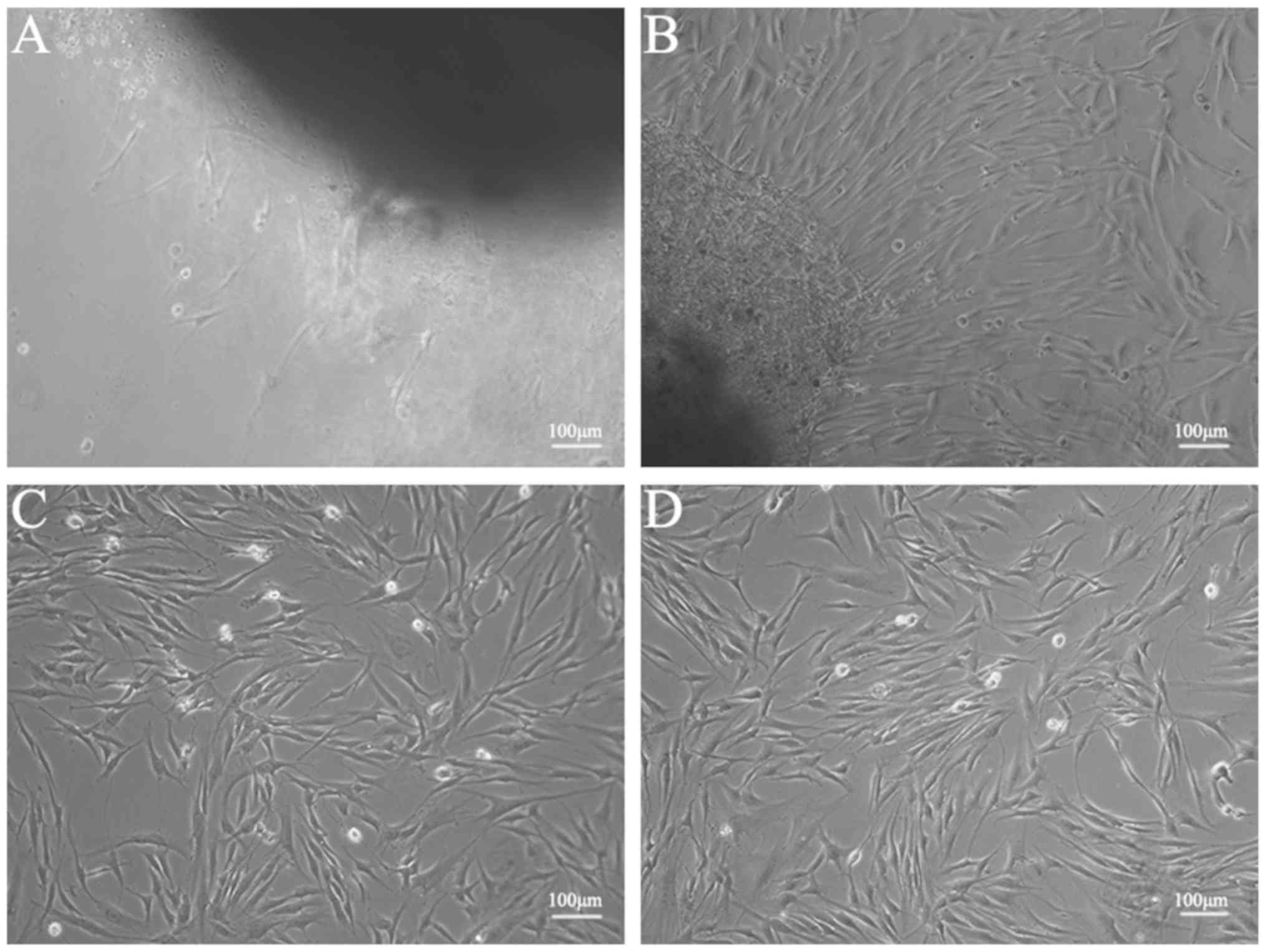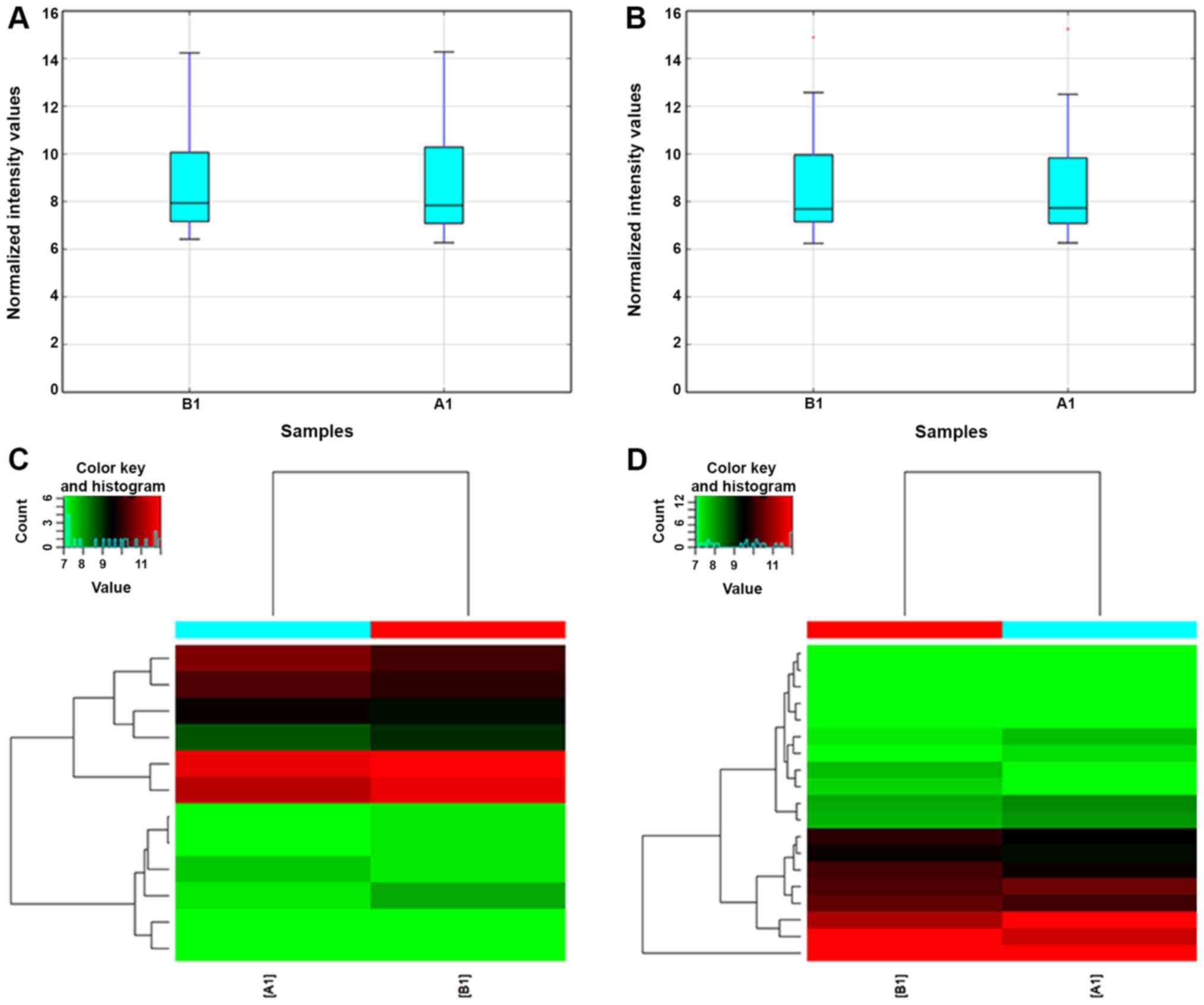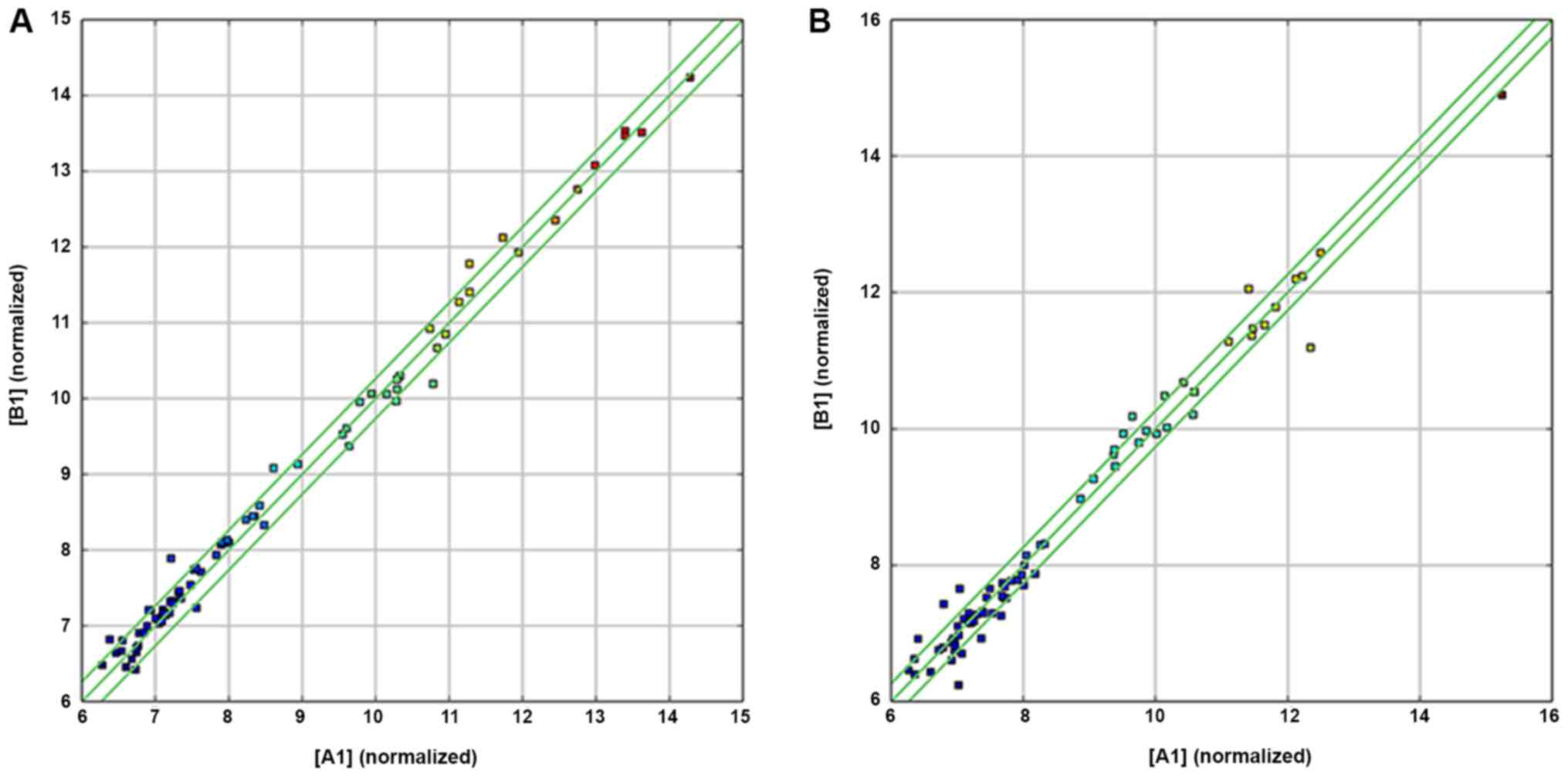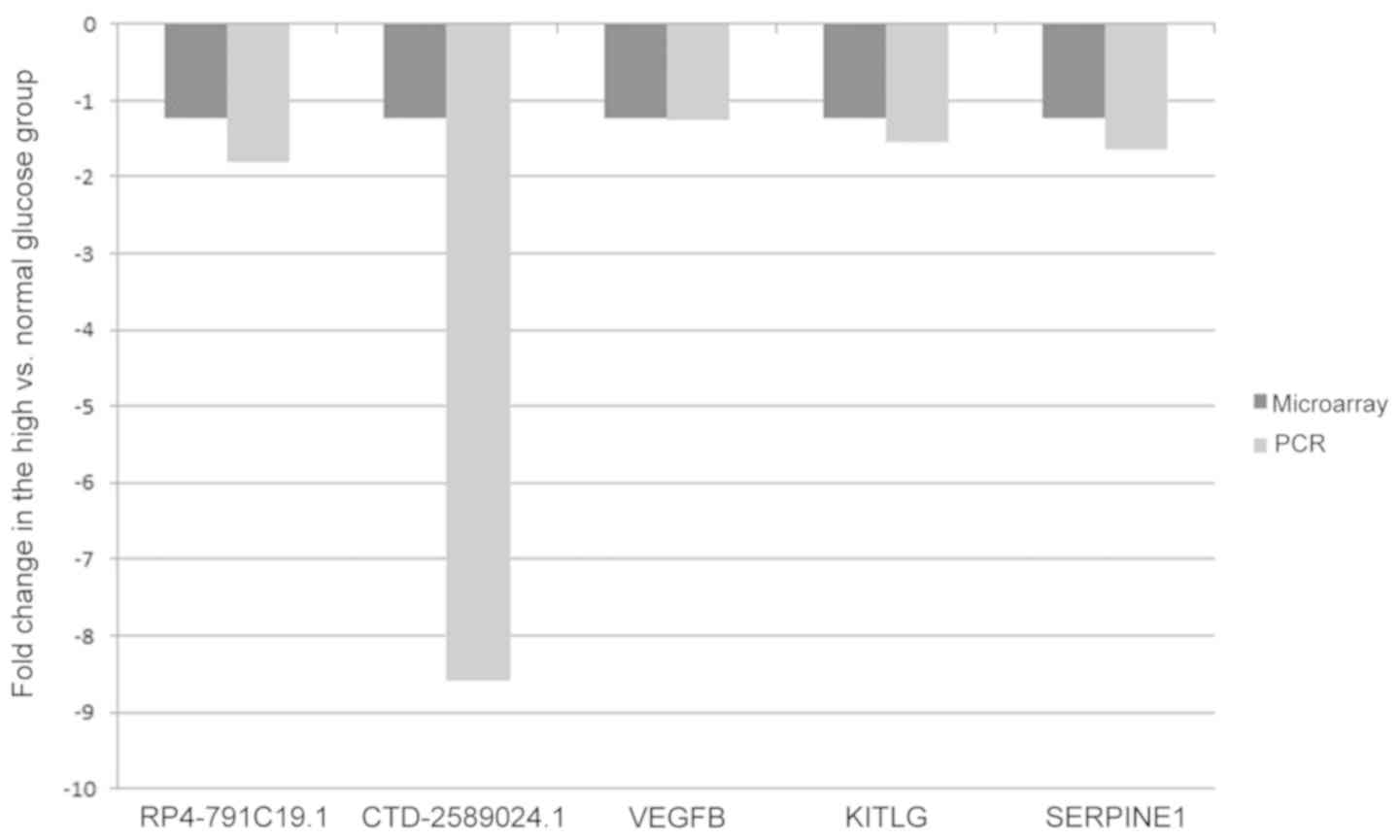|
1
|
Hu C and Jia W: Diabetes in China:
Epidemiology and genetic risk factors and their clinical utility in
personalized medication. Diabetes. 67:3–11. 2018. View Article : Google Scholar : PubMed/NCBI
|
|
2
|
Tellechea A, Leal EC, Kafanas A, Auster
ME, Kuchibhotla S, Ostrovsky Y, Tecilazich F, Baltzis D, Zheng Y,
Carvalho E, et al: Mast cells regulate wound healing in diabetes.
Diabetes. 65:2006–2019. 2016. View Article : Google Scholar : PubMed/NCBI
|
|
3
|
Davidson EP, Coppey LJ, Shevalye H,
Obrosov A and Yorek MA: Vascular and neural complications in type 2
diabetic rats: Improvement by sacubitril/valsartan greater than
valsartan alone. Diabetes. 67:1616–1626. 2018. View Article : Google Scholar : PubMed/NCBI
|
|
4
|
Mercer TR, Dinger ME and Mattick JS: Long
non-coding RNAs: Insights into functions. Nat Rev Genet.
10:155–159. 2009. View
Article : Google Scholar : PubMed/NCBI
|
|
5
|
Herter EK and Xu LN: Non-coding RNAs: New
players in skin wound healing. Adv Wound Care (New Rochelle).
6:93–107. 2017. View Article : Google Scholar : PubMed/NCBI
|
|
6
|
Cai B, Zheng Y, Ma S, Ma S, Xing Q, Wang
X, Yang B, Yin G and Guan F: Long noncoding RNA regulates hair
follicle stem cell proliferation and differentiation through
PI3K/AKT signal pathway. Mol Med Rep. 17:5477–5483. 2018.PubMed/NCBI
|
|
7
|
Chen L and Li J, Li Q, Li X, Gao Y, Hua X,
Zhou B and Li J: Overexpression of LncRNA AC067945.2 down-regulates
collagen expression in skin fibroblasts and possibly correlates
with the VEGF and Wnt signalling pathways. Cell Physiol Biochem.
45:761–771. 2018. View Article : Google Scholar : PubMed/NCBI
|
|
8
|
Guo L and Huang X, Liang P, Zhang P, Zhang
M, Ren L, Zeng J, Cui X and Huang X: Role of XIST/miR-29a/LIN28A
pathway in denatured dermis and human skin fibroblasts (HSFs) after
thermal injury. J Cell Biochem. 119:1463–1474. 2018. View Article : Google Scholar : PubMed/NCBI
|
|
9
|
Kumar MM and Goyal R: LncRNA as a
therapeutic target for angiogenesis. Curr Top Med Chem.
17:1750–1757. 2017. View Article : Google Scholar : PubMed/NCBI
|
|
10
|
Harrow J, Denoeud F, Frankish A, Reymond
A, Chen CK, Chrast J, Lagarde J, Gilbert JGR, Storey R, Swarbreck
D, et al: GENCODE: Producing a reference annotation for ENCODE.
Genome Biol. 7 (Suppl 1):S4.1–S9. 2006. View Article : Google Scholar
|
|
11
|
Schmittgen TD and Livak KJ: Analyzing
real-time PCR data by the comparative C(T) method. Nat Protoc.
3:1101–1108. 2008. View Article : Google Scholar : PubMed/NCBI
|
|
12
|
Wilfinger WW, Mackey K and Chomczynski P:
Effect of pH and ionic strength on the spectrophotometric
assessment of nucleic acid purity. Biotechniques. 22:474–476,
478–481. 1997. View Article : Google Scholar : PubMed/NCBI
|
|
13
|
Nambiar DK, Kujur PK and Singh RP:
Angiogenesis assays. Methods Mol Biol. 1379:107–115. 2016.
View Article : Google Scholar : PubMed/NCBI
|
|
14
|
Potente M, Gerhardt H and Carmeliet P:
Basic and therapeutic aspects of angiogenesis. Cell. 146:873–887.
2011. View Article : Google Scholar : PubMed/NCBI
|
|
15
|
Martin P and Nunan R: Cellular and
molecular mechanisms of repair in acute and chronic wound healing.
Br J Dermatol. 173:370–378. 2015. View Article : Google Scholar : PubMed/NCBI
|
|
16
|
Dong Y, Rodrigues M, Kwon SH, Li X, Sigen
A, Brett EA, Elvassore N, Wang W and Gurtner GC: Acceleration of
diabetic wound regeneration using an in situ-formed stem-cell-based
skin substitute. Adv Healthc Mater. 7:e18004322018. View Article : Google Scholar : PubMed/NCBI
|
|
17
|
Wang W, Yan X, Lin Y, Ge H and Tan Q:
Wnt7a promotes wound healing by regulation of angiogenesis and
inflammation: Issues on diabetes and obesity. J Dermatol Sci.
2018.(Online ahead of print). View Article : Google Scholar
|
|
18
|
Mercer TR and Mattick JS: Structure and
function of long noncoding RNAs in epigenetic regulation. Nat
Struct Mol Biol. 20:300–307. 2013. View Article : Google Scholar : PubMed/NCBI
|
|
19
|
Klattenhoff CA, Scheuermann JC, Surface
LE, Bradley RK, Fields PA, Steinhauser ML, Ding H, Butty VL, Torrey
L, Haas S, et al: Braveheart, a long noncoding RNA required for
cardiovascular lineage commitment. Cell. 152:570–583. 2013.
View Article : Google Scholar : PubMed/NCBI
|
|
20
|
Yuan SX, Yang F, Yang Y, Tao QF, Zhang J,
Huang G, Yang Y, Wang RY, Yang S, Huo XS, et al: Long noncoding RNA
associated with microvascular invasion in hepatocellular carcinoma
promotes angiogenesis and serves as a predictor for hepatocellular
carcinoma patients' poor recurrence-free survival after
hepatectomy. Hepatology. 56:2231–2241. 2012. View Article : Google Scholar : PubMed/NCBI
|
|
21
|
Buranasin P, Mizutani K, Iwasaki K,
Mahasarakham CPN, Kido D, Takeda K and Izumi Y: High
glucose-induced oxidative stress impairs proliferation and
migration of human gingival fibroblasts. PLoS One. 13:e2018552018.
View Article : Google Scholar
|
|
22
|
Pennacchio LA, Bickmore W, Dean A, Nobrega
MA and Bejerano G: Enhancers: Five essential questions. Nat Rev
Genet. 14:288–295. 2013. View
Article : Google Scholar : PubMed/NCBI
|
|
23
|
Ørom UA, Derrien T, Beringer M, Gumireddy
K, Gardini A, Bussotti G, Lai F, Zytnicki M, Notredame C, Huang Q,
et al: Long noncoding RNAs with enhancer-like function in human
cells. Cell. 143:46–58. 2010. View Article : Google Scholar : PubMed/NCBI
|
|
24
|
Lai F, Orom UA, Cesaroni M, Beringer M,
Taatjes DJ, Blobel GA and Shiekhattar R: Activating RNAs associate
with Mediator to enhance chromatin architecture and transcription.
Nature. 494:497–501. 2013. View Article : Google Scholar : PubMed/NCBI
|
|
25
|
Ngo MT and Harley B: Perivascular signals
alter global gene expression profile of glioblastoma and response
to temozolomide in a gelatin hydrogel. Biomaterials. 198:122–134.
2018. View Article : Google Scholar : PubMed/NCBI
|
|
26
|
Wu Y, Yuan M, Su W, Zhu M, Yao X, Wang Y,
Qian H, Jiang L, Tao Y, Wu M, et al: The constitutively active PKG
II mutant effectively inhibits gastric cancer development via a
blockade of EGF/EGFR-associated signalling cascades. Ther Adv Med
Oncol. 10:19603666752018. View Article : Google Scholar
|
|
27
|
Li LH, Wu GY, Lu YZ, Chen XH, Liu BY,
Zheng MH and Cai JC: p21-activated protein kinase 1 induces the
invasion of gastric cancer cells through c-Jun NH2-terminal
kinase-mediated activation of matrix metalloproteinase-2. Oncol
Rep. 38:193–200. 2017. View Article : Google Scholar : PubMed/NCBI
|
|
28
|
Jung N, Yu J, Um J, Dubon MJ and Park KS:
Substance P modulates properties of normal and diabetic dermal
fibroblasts. Tissue Eng Regen Med. 13:155–161. 2016. View Article : Google Scholar : PubMed/NCBI
|
|
29
|
Duru EA, Fu Y and Davies MG: Role of S-1-P
receptors and human vascular smooth muscle cell migration in
diabetes and metabolic syndrome. J Surg Res. 177:e75–e82. 2012.
View Article : Google Scholar : PubMed/NCBI
|
|
30
|
Zhao R, Liang H, Clarke E, Jackson C and
Xue M: Inflammation in chronic wounds. Int J Mol Sci. 17:20852016.
View Article : Google Scholar
|


















